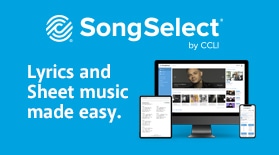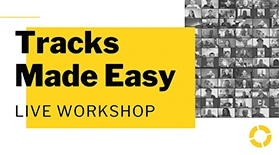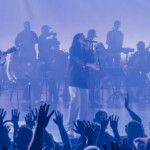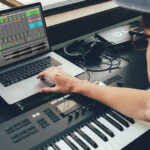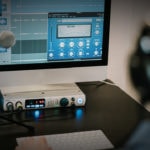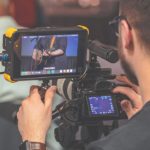Gear
How This New Monitor Tech Changes The Game
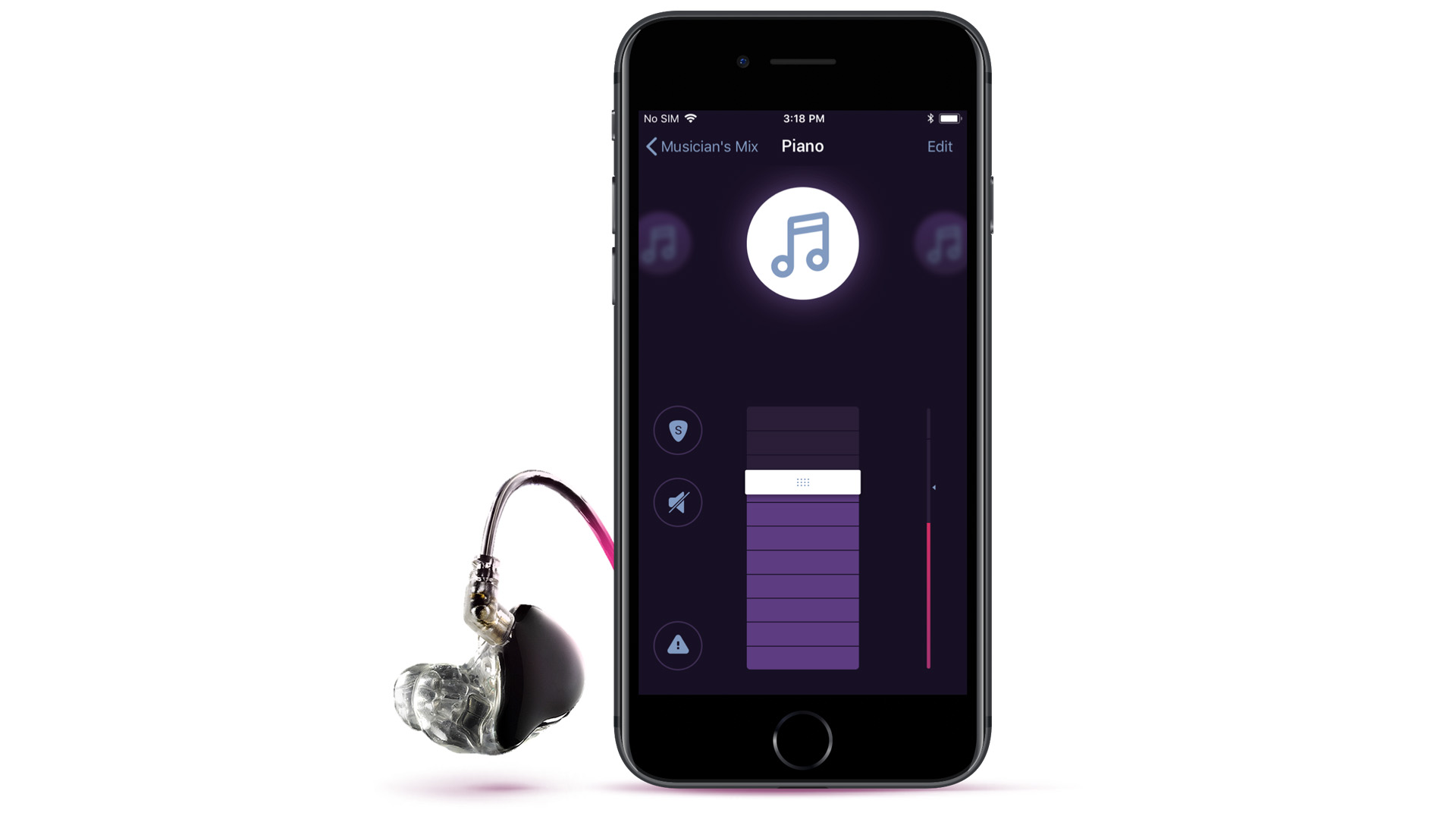
Today we’re sharing a unique story from our friends over at Audio Fusion Systems. Co-founders Kevin Slick and Brandon Leafblad were volunteering together at a church when they saw a need that was going unfilled. Now Brandon is here to share about the new technology they created, which transforms your iPhone into your personal stereo IEM mixer. CCLI license holders save $99.99.
On my desk sits an old personal monitor mixer. We once made great use of it, and others like it, at my church. But now it’s collecting dust. The ethernet port is cracked, a couple of the buttons are missing, and there is a buildup of tape residue on the edges from years of replacing the scribble strips. It’s been out of commission since 2016.
We were going to send it back to the manufacturer for repairs because I had pulled it over one too many times walking off stage with my long headphone cable still attached, but it just wasn’t worth the time and cost. Our church couldn’t afford wireless bodypacks either, so we were kind of stuck.
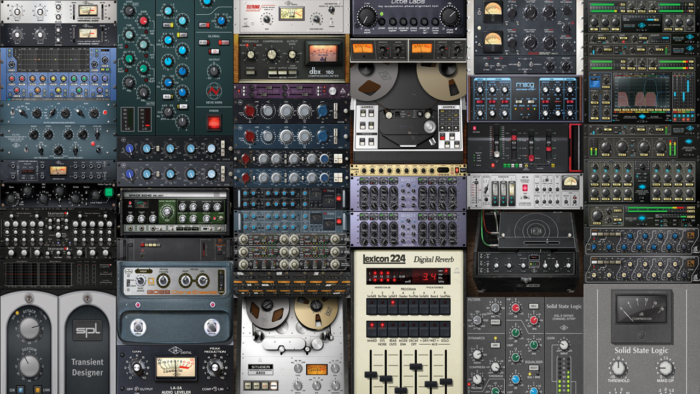
That old monitor mixer is emblematic of the technological shift that is about to take place in the music industry. A shift that has already taken place in the studio. In the 70’s and 80’s studios had rooms filled with hardware. Boxes upon boxes of signal processing gear; reverb, delay, compressors, each doing something to the analog signals to create the effect the engineer wanted in the recording. Today those discrete pieces of hardware are gone. Replaced by software plug-ins for Digital Audio Workstations. These software platforms have transformed the entire recording industry and made recording accessible and affordable for musicians everywhere.
There are numerous examples of game changing inventions that were misunderstood and mocked at first. Yet, we know how that has turned out for the “Horseless Carriage”, the Personal Computer and the Smartphone. History proves again and again that innovations like these can completely change the way we create, work and live our everyday lives. Like the recording industry, the monitoring of live performance is undergoing a similar game changing shift as computer and networking technology introduces new capabilities and allows sound budgets to stretch further.
This shift is beginning to give forward-thinking churches and worship musicians new abilities that, until now, they haven’t had access to. I’m personally seeing it every Sunday at my church. Here’s how our little software company is making it happen.
How does this progress affect worship teams?
In the mid-2000s, when the popularity of personal monitor mixers was exploding, my co-founder Kevin Slick was leading a double life. During the week he led a software engineering team developing networking products for Dell. On the weekends he served at our church in one of the lowliest of roles: the Monitor Engineer.
During each service, Kevin lingered in the shadows off-stage. He was poised, ready and willing to help our musicians in any way they needed to perform at their best and create an engaging worship experience. In that role he witnessed, first-hand, the benefits and challenges musicians faced when our church implemented personal monitor mixers.
The new boxes gave the musicians incredible power to control their own mix. The Front-of-House engineers—and the rest of the tech team—loved the personal mixers, as they had control of their stage noise. Sound checks were a thing of the past. But, for all the benefits the personal monitor mixers introduced, there came significant drawbacks. Even though the musicians could control their own mix, all the power to actually do so was now on stage and only on stage. The boxes were great for the backline, but all the controls for the up-front vocalists were now in an ugly box attached to their mic stand or out of reach at the back of the stage. They were now isolated and helpless if things went wrong. Kevin was powerless to help the musicians and worship leaders once the service began. He had no way to hear what they were hearing in their mix and couldn’t make any adjustments if he could.
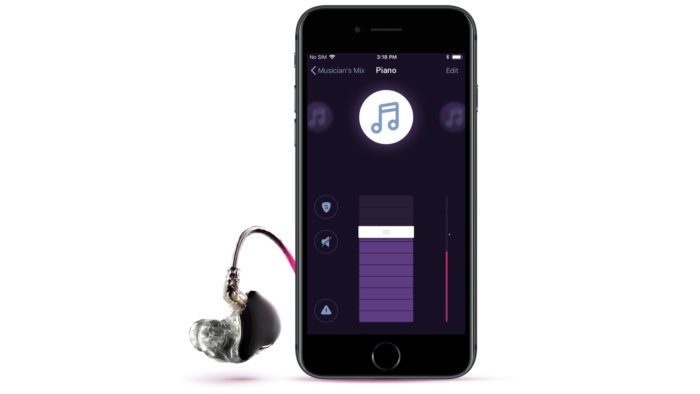
Once the iPhone and iPad hit the market, Kevin’s seemingly unconnected worlds converged. He recognized that these new smart devices were far more capable of delivering digital networking than the boxes so many music gear manufacturers were making. This manufacturer’s box didn’t talk to that manufacturer’s box. Everything in the music gear industry was fragmented. So Kevin began dreaming of a software technology that would make all music gear plug-and-play. Where smart devices could easily find one another and pass audio over standard networking protocols.
Kevin and I met when we both volunteered to help launch the first multi-site campus of our church in Austin, Texas. By any account, our church would be considered a megachurch. Today it has over 5,000 attendees across its four campuses. I was leading worship for our adult congregation at the new multi-site and Kevin was running front-of-house and leading the entire tech team. Every Sunday, we labored shoulder-to-shoulder. Setting up and tearing down the gear at the elementary school we rented. We were proud to do the work for our church, but slinging cables was not our idea of a good time.
Little did I know, Kevin’s concept would one day eliminate these boxes and cables by delivering real time audio over Wi-Fi. Kevin left his job at Dell and began working on the Audiofusion technology full-time. It turns out delivering real time audio over Wi-Fi was an incredibly hard problem to solve. Three years and four patent applications later, Kevin was still developing the algorithms and reducing the latency when I quit my job and joined him on his quest.
With new technology comes new capabilities
As development continued, we began testing the system in the relative obscurity of the children’s ministry at our multi-site campus. We used the system over the course of several years with dozens of musicians. Using this new system was like a third world country skipping landlines and going straight to cellular phones. Students who had never even played with floor monitors now had stereo, wireless, in-ear monitors with a touch screen to control their own personal mix. Today, middle school and high school students are playing to a click and learning to run tracks. They think nothing of pulling their phones out to make changes to their mix and look at us with expressions that say, ‘How else would you do this?’.
Where else does it make sense to use this?
-Audiofusion makes sense if your church would like to get rid of floor monitors.
-Audiofusion also makes sense if you have personal monitor mixers but would like to go wireless.
-You may have great gear for your main stage but our system can give you wireless in-ear monitoring for your student and children’s ministries.
I have traveled all over the United States sharing the technology at conferences and events such as NAMM, WFX, and Church Sound Boot Camp to allow churches and musicians to hear the sound quality for themselves. Most musicians who try Audiofusion are amazed by the sound quality, and frankly kind of blown away that this is possible with an iPhone. Over Wi-Fi. Without cables. A lot of this would have been impossible with our old personal monitoring system.
Ok, but it sounds expensive
I realize budget, or lack thereof, is often the main factor holding churches back from upgrading to much-needed monitor gear. But the truth is, because of the technology, the software we’ve developed is actually a fraction of what you’d need to spend for hardware based systems. If you’re church is blessed to have a budget in the first place, every dollar spent on gear counts. Every dollar saved is a dollar that can be spent on other ministries.
After being held back by the staggering price tag of wireless IEMs, eager early adopters have embraced our technology. Hundreds and hundreds of churches around the US and around the world are using Audiofusion every Sunday. In terms of actual costs, I’ll cover those in a minute. But first, there are other considerations other than budget. Things like simplicity and ease of use.
What is so simple about monitoring this way?
The cool thing about this system is it’s intuitiveness. First, musicians can control their own sound on the iPhone in their back pocket. There really isn’t a need anymore for musicians and sound techs to send hand signals to each other just to get the musician’s mix just right. On top of that, each musician can quickly and easily set their levels at the same time. The result is, soundchecks are a thing of the past, and monitoring can be set up for each service in as little as 10 minutes. And as a bonus for everyone, monitoring this way drastically reduces stage clutter by eliminating stage boxes and the number of cables running all over the stage.
The System
So let’s take a look at what makes up the Audiofusion system. There are three parts, and it’s all software, which means you can download in a matter of seconds.
SoundCaster: Connect your digital audio sources and broadcast multi-channel audio to each musician. First up is SoundCaster. It’s the brains of the operation and runs on a Mac connected to your digital mixer or audio interface. Just like a Digital Audio Workstation (DAW), SoundCaster will recognize the multi-channel audio coming in from the mixer. You can select up to 16 channels to include in the mix, and SoundCaster will broadcast the incoming audio over Wi-Fi to all connected iOS devices running Performer.
Performer: Hear and control your mix right on your phone. Musicians use Performer on their iOS devices to receive the audio and control their own mix. Each musician can customize volume and panning on each of the 16 channels to create a unique personal mix. Any adjustments needed to the mix are handled with a quick swipe of the on-screen fader. Instead of plugging in-ear headphones (monitors) into an $800 wireless body pack, or a $400 personal monitor mixer, each musician can simply plug those headphones right into their iPhone or iPad to hear their mix in CD quality stereo sound.
Director (Coming Soon): Create in-ear monitoring mixes for each musician, on the go. Lastly, there’s Director—the iPad app monitor engineers and sound technicians use to hear and control the mixes of the musicians on stage. Director is completely optional, but many sound techs are finding it useful to punch into each musician’s mix and hear exactly what the musician is hearing on their device on stage. The musician can make adjustments as needed or the monitor engineer can make adjustments for them. This simultaneous control is incredibly powerful to give the musicians the control and support they need to perform their best.
Sounds cool, but does this really work?
Streaming live audio from your mixer to the musicians’ ears over Wi-Fi is entirely realistic and possible. Earlier I showed you how our church is using it every single Sunday. We also have over 400 churches that are using Audiofusion every single Sunday as well. With the right setup, most musicians will not be able to perceive any latency. Even those who have the “ear of an angel” will find the system to be an incredible tool in live performance.
The sound quality and frequency range of the iPhone will rival or surpass even the ultra-high end hardware-based monitoring systems on the market today. We started with Apple because they have been engineered from the ground up to deliver low latency and high quality throughout the audio chain on the device. They are high-performing and meet the standards of most musicians in both audio quality and latency.
Want proof? Here’s a quick case study…
Marcos Esparza at Austin Christian in Austin, Texas recently implemented Audiofusion for his worship team’s vocalists. The musicians on the backline were already making use of wired personal monitor mixers. The vocalists, however, were using open floor monitors which meant they were stuck in one spot, had high stage noise and couldn’t run a click. So Marcos went online to see about hooking his vocalists up with a wireless in-ear system but soon found out just how expensive they can be. He was looking at a whopping $5000 worth of gear for five vocalists. Undeterred, Marcos found out about our Audiofusion system and was able to get his vocalists into in-ears for $500 for all five vocalists, plus the cost of a high-performance Wi-Fi router.
Tom and Kristin Burritt felt called to lead worship at Open Cathedral, a brand new church plant here in Austin, TX. This experienced husband and wife team had served on stage at some of the biggest churches in Texas with budgets for state of the art gear. They had performed with the best in-ear monitoring systems money could buy but they chose Audiofusion when it came time to start fresh on a church planting budget. The Burritts now lead a team that is playing to a click, and engages their congregation with incredible sound.
Here’s what to do next
If having a wireless monitor system like Audiofusion sounds like it would be a good fit for your worship team, you’ll want to download SoundCaster and Performer, and give it a try with your own gear.
In fact, SoundCaster comes with a handy feature we call Gear Test mode. With it, you can broadcast up to 16 channels to as many as 16 Performers. You wouldn’t be able to use the system live because Gear Test Mode will only run for 15 minutes at a time but you can restart it as many times as you need to hear the sound quality for yourself and make sure your Wi-Fi router is capable. When you’re ready, you can purchase permanent connections through in-app purchase on SoundCaster.
Performer is a free download, and every musician on your team can have that on their iPhone or iPad. Each Performer-to-SoundCaster connection is a one time purchase of $99 and will allow you to connect one Performer at a time. So, for example, if you typically have 7 musicians on stage at one time, then you’ll need to own 7 connections. It wouldn’t have to be the same 7 Performers each week. You control on SoundCaster which Performers use the connections you own.
Something special for CCLI members
I know what it’s like to be a part of a worship team with dreams of serving our congregation to the full extent, yet being limited by our budget. Kevin and I lived that for several years, and have figured out the best way we know how to get over the specific hurdles worship teams face. Now we want to enable worship teams like yours to engage your congregations with excellence in a simple and cost-effective way.
For the very first time, we are offering discounted SoundCaster connections to CCLI license holders. Get 5 connections for the price of 4 and save $99.99. Or you can double it and get 10 connections for the price of 8, saving you $199.98.
